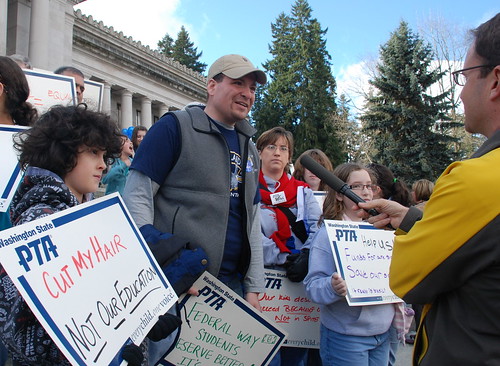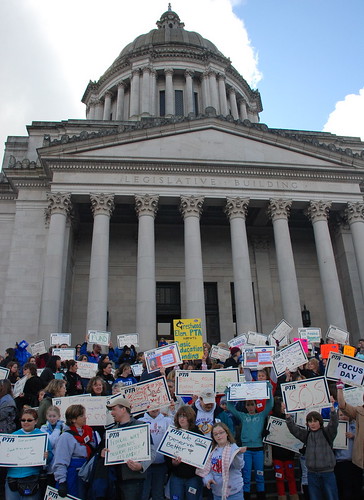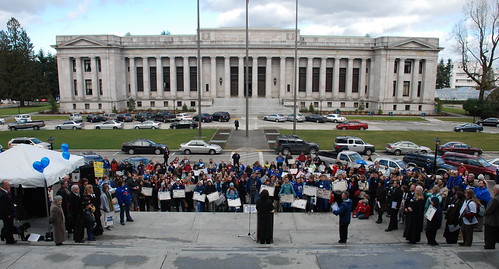Back to school update for Jane
This post was written by Emma Margraf, a foster parent and advocate.
Tonight the most important question I have to ask will be: is it appropriate to wear my t-shirt that has hip-hop stars on the side of Mt. Rushmore to the evening for new Upper School students and their parents at the fancy private school Jane will start this week? I can’t decide.
Yes, she was accepted to the private school. It was a pretty long admission process as the school wanted to be sure she had at least some idea of what she was in for. She starts this week. We were so lucky to find a way to pay for it—neither the agency with which I am licensed nor I have $22,000 lying around for one year of her education. In fact, when the check came in to the agency to cover the cost one of the administrators didn’t know what it was for and nearly had a heart attack. It was a letdown for him to realize it was already spent. (When I told a lawyer friend this story he said, “You know, one of the partners I work with said the other day that you can give a non-profit $5 to do $20 worth of work” – but that’s neither here nor there).
Her books cost $525—and most of them were used. When she saw the pile of them, she immediately took a picture to send to people so that they could be thoroughly impressed. There are TWO math books. The English books are on a wide range of topics, and she has already written a paper on her summer reading book. She didn’t write a paper all of last year.
What’s more, there is an English teacher from the school who has been voluntarily tutoring her this summer. She has been to several sessions, and is incorporating his feedback as she goes. We had a meeting with the advisor, the learning specialist, Jane’s caseworker, and my friend who works at the school already, tonight is the first of several back to school meetings. All the meetings include dinner.
It’s a good thing that there’s been so much preparation, because Jane’s got the summer doldrums. She’s been working as a counselor in training for the summer, and it’s not exactly what I hoped. All of the other kids from the Middle—that area of public school where kids get dropped off and left to their own devices –seem to be in this program too. The point of the program seems to be to have youth who are stuck in mediocre programs all through the school year teach younger kid how to be ready exactly for that too when they get older.
Jane’s interpretation of her job is to make sure the kids cross the street within the lines, that they are quiet, that they don’t rough house in the pool. None of the activities are memorable, but she has told me numerous times how important it seems to be to not bring peanuts in her lunch. There are so many campers, they need some extra help to keep track of them, and they seem to use the Counselors In Training as a second set of eyes to make sure kids aren’t misbehaving. When she gets home every day, she’s done so little actual thinking that she is super hyper all evening, asking me a billion questions while I try and push her out the door for a bike ride before the sun goes down.
When I was young I went to Shakespeare Camp. We performed comedies for four summers, and while I was there I learned to juggle, hang a spoon on my nose, and sing Elizabethan songs. After those years I worked as a junior counselor in a program that focused on wellness in combination with fairy tales of the outdoors that led to all of the junior counselors writing clues that were left throughout hiking trails for the kids to follow on an adventure.
The senior counselors in that program were directed to take us under their wing, and mine gave me The Prophet by Kahil Gibran and Johnathan Livingston Seagull while trying to convince me to write short stories and read them a loud on camp overnights.
The summer after my junior year in high school I was sent to math camp at Mt. Holyoke – a rebellious girls only program to aimed at ending the math divide between girls and boys. I made life-long friends there, and it gave me an opportunity to visit Fenway Park for the first time.
All things are possible. My parents never had a lot, and I honestly don’t know how I managed to get all of those opportunities. Nor should I have. It was their job to figure it out, and now it’s mine for Jane. I screwed this summer up, but have now learned my lesson. I know the kids at her new school aren’t working at keeping younger kids following the rules and only the rules this summer—at least I think they aren’t. I have visions of them serving as crew on sailing trips to Europe and learning to become trapeze artists. Next summer we’ll do a better job; there’s got to be some equivalent of learning to juggle or visiting Fenway Park.
In the meantime, I have Upper School New Student Night, Tenth Grade Outdoor Education Night, and I have to figure out what to wear to each while getting ready to be the youngest parent in the room again. If I had given birth to Jane I would have been 21 when she was born, which is much more common at public school than it is in the private ones I have been around.
Jane’s first day is Wednesday. Two of her teachers have PhDs. One is a retired military veteran who has lived all over the world. She’s hoping to be in the fall play.







